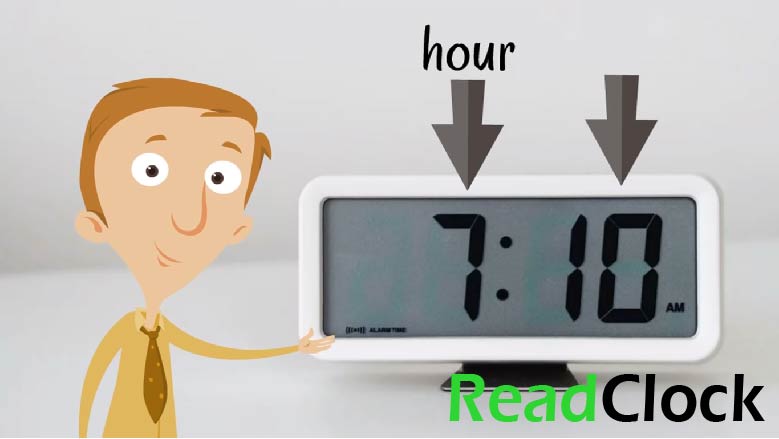How to Read Clock – In the era dominated by digital displays the art of reading a traditional clock remains a timeless skill. With hands that tick with purpose, each clock face tells a story beyond mere hours and minutes. This skill often overlooked is not just about telling time but understanding the dance of the minute and hour hands in harmony. Through meticulous exploration one discovers the nuanced beauty of analog timekeeping. Learning to read a clock is a rite of passage blending practicality with the elegance of a bygone era.
The Basics of How to Read Clock
In modern day fast-paced world the skill of clock reading might seem antiquated yet it remains a fundamental skill that transcends the digital revolution. This writer, with a penchant for scrutinizing the minutiae contends that the art of understanding the traditional clock is not merely an exercise in nostalgia but a cognitive skill enhancing spatial and numerical understanding. The journey of clock reading begins with familiarizing oneself with the clock’s face, a round dial graced by the sequential dance of its hands.
Understanding the Clock Face
How to Read Clock – The clock face is the storyteller of time narrated through its hands’ movements. Divided into 12 sections each representing an hour, the clock face is a circle of timekeeping. The numbers typically 1 through 12 act as markers. In modern times digital clocks may have lessened the necessity for a deep-seated understanding of the analog clock face yet the elegance and sheer mechanical poetry of the traditional clock cannot be overlooked.
The Hour Hand: Your Guide Through the Day
The Hour Hand the shorter and slower of the two main characters on this stage moves with a dignified pace completing a full circle every 12 hours. It is your steadfast guide through the larger increments of the day offering a sense of the ongoing hour. Understanding the position of the hour hand in relation to the numbers on the clock face provides a rough estimate of the time but the true precision comes in partnership with its counterpart.
The Minute Hand: The Detail-Oriented Partner
Contrary to the hour hand is the Minute Hand the longer and more precise of the pair. This hand traverses the circumference of the clock face in a mere 60 minutes touching each of the 12 numbers and hence allowing for an exact understanding of the time. The interplay between the hour and minute hands is where the essence of clock reading is found. Observing their relative positions offers a clear picture of the time down to the minute.
Seconds Hand: The Fast Mover
The Seconds Hand often omitted in simpler clocks for its frenetic pace, marks the relentless passage of time in second increments. Watching the seconds hand can be mesmerizing as it races around the clock face, reminding us of time’s unyielding march forward. While not crucial for a rough understanding of the time the seconds hand adds a layer of precision useful in tasks requiring fine timekeeping like cooking or sports.
Through the dissection of the clocks components it becomes evident that the convergence of the hour minute, and seconds hands provides not just a method of telling time but a canvas upon which the passage of time is painted. This reviewer firmly believes that the act of reading a clock extends beyond simple timekeeping it is an exercise in mindfulness, a reminder of the fleeting nature of each moment.
Digital vs. Analog Clocks: A Comparative Review
In modern fast-paced globe the way one chooses to read time can say a lot about their personal preference and lifestyle. The debate between the supremacy of digital versus analog clocks is an ongoing one, with both types of timepieces having their staunch advocates and critics. This comparative review delves deep into the functionalities aesthetics, and user-friendliness of both, providing a well-rounded view of each.
The Charm of Analog Clocks
Analog clocks hold a special place in the hearts of traditionalists and aficionados of classic design. Their mechanical precision and elegance are unmatched. The hands moving over a numbered face not only tell time but also add a decorative touch to any room. However they require a basic understanding of time division and can be challenging for young learners or those who prefer a straightforward display. Their maintenance primarily in winding or battery replacement, can be seen as a minor inconvenience or a cherished ritual. The charm of analog clocks lies in their intricate workings and the beauty of their design appealing to those who appreciate craftsmanship and nostalgia.
Digital Clocks: Precision at a Glance
Digital clocks on the other side offer precision and clarity. The numbers displayed in a straightforward manner make reading time a breeze, which is especially beneficial in a hurry or in the middle of the night. They often come with additional features such as alarms timers and even temperature displays making them highly versatile. However, their utilitarian appearance might not blend well with all decor styles and the dependency on electricity or batteries can be a drawback during power outages.
Personal Testing Anecdotes: Analog vs. Digital
In personal testing both analog and digital clocks served their primary function well – telling time. However the experience differed significantly. Reading an analog clock felt more engaging requiring a moment of interpretation and mental calculation which some may find stimulating or tedious based on their disposition. Digital clocks offered instant gratification with no need for interpretation. In terms of reliability digital clocks had the edge with their alarms and precise timekeeping. However the warm tick of an analog clock added a comforting and familiar background sound to daily activities. Ultimately, the choice between digital and analog clocks comes down to personal preference, aesthetics, and functionality requirements.

